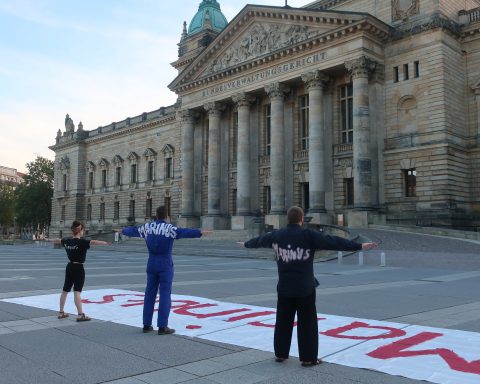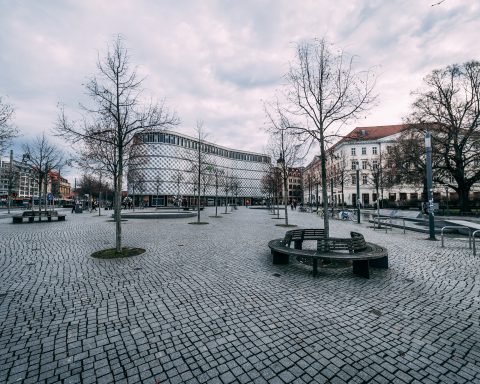Is triticale the crop of the future? Will Poland, with its historical resilience and agricultural power, seize the opportunity to become a leader in feeding the world? Some evidence suggests it could.

Echoes of the past
Gdansk, September 1939. Germany invades Poland, followed closely by the Soviet Union on 17 September from the eastern front. Fighting persists for just under a month, and on 6 October, for the second time in its history, Poland is torn asunder and all but abandoned. Germany and the Soviet Union have cemented their occupation of Polish territory.
What followed would be known as the Intelligenzaktion: a secret genocide that sought to wipe out what Nazi Germany deemed “politically dangerous people from Polish society.” The Poles were just one of several Slavic groups in the “Special Prosecution Book,” which contained approximately 100,000 intellectual leaders (Szlachta) and anyone who German authorities felt would lead resistance to the Reich. An entire generation of Polish and other Slavic intellectuals and cultural wealth was annihilated, their children scarred and orphaned.
Genocides continue elsewhere in the world today. However, with all its imperfections, Europe is a far cry from its war-torn past.
I would even step out of line to say that if any group of countries can step up to the world stage and lead, it is perhaps the former Eastern European block – given those countries’ ability to be reborn from the ashes, coupled with the stability in which they now find themselves.
The EU has ensured the longest period of peace and civil security in the history of western and central Europe. Citizens of its member states enjoy the freedom of movement to pursue life, love and work across borders. Businesses have access to markets under a single set of laws governing trade, and consumers have access to international goods with minimal hassle.
Though the EU has come under some heavy criticism in recent times, many would agree its benefits for the many outweigh its shortcomings for the few. Poland would probably agree: Upon liberalization from 1989 onwards, the country has worked hard to sustain its economy and has enjoyed the fruits of its labor, particularly in agriculture.
Future prospects
Since Poland’s acceptance into the EU and its single market, Polish agriculture has performed extremely well, with over two million private farms in existence. It has reached the rank of top producer of potatoes and rye in Europe, and is a key producer of barley, oats, sugar beet, flax, and fruits. Presently, several other types of Polish farms also have the potential to become lead European producers, as demand for smoked fish, fine chocolates, dairy products, and special bread continues to climb.
Furthermore, the Polish manufacturing sector is not far behind its European counterparts. The country’s most successful exports include machinery, furniture, clothing, and cosmetic products.
The question is: why stop there? With all this skin in the game, how will Poland invest in its future success?
In Poland, one crop seems to stand out above the rest: triticale. If it looks familiar, it is because it’s the love-child of wheat and rye, two of the most defining crops in agricultural history. Triticale is a hybrid species and was first created in the late 19th century in Scotland and Germany. The surprise? It was bred in a lab.
Poland has become the chief exporter of triticale in Europe, producing 5.2 million metric tons of it, distantly followed by Germany at 3.0 million metric tons (2014).

Triticale has a higher protein content than its parent crop wheat, and continues to be investigated as potentially able to solve nutritional problems in the cereal industry. As weather becomes more extreme all over the world, it is essential to explore solutions using genetic technologies to produce crops resilient to the changing climate, while also containing a high nutritional value.
Challenge or opportunity?
It is no secret that one of our greatest future challenges will be overpopulation, and providing food for the coming generations. Greater still is the challenge of doing this in a way that cuts back on the enormous harm we have already done to the environment. Though we are perhaps decades away from fully sustainable solutions, shifts in mindset and practice must happen today if we are to see their realization in years to come.
If only there was a way to experiment with this technology on an accelerated basis. Now there is: enter vertical farming.
Initially conceived as a project at Columbia University in New York by ecologist Dickson Despommier, vertical farming is slowly gaining momentum among ecologists, scientists, farmers and entrepreneurs. In short, it allows for the sowing, growing and harvesting of crops in indoor facilities. These facilities employ customized software to regulate every aspect governing the growing process, including watering, light intensity, moisture, etc.

Several companies and organizations have already sprung up in the United States, Germany and Japan – developing this technology, educating farmers, and creating a market worth potentially billions in the years to come. After all, people gotta eat!
Will Poland seize the opportunity to integrate this new technology and lead Europe in feeding the future?
A new legacy
Poland presently enjoys a strong domestic market, low private debt, relatively low unemployment, a flexible currency, and a well-diversified economy that does not depend heavily on any one sector. So much so, that, unlike other European countries, it largely avoided the 2008 recession.
With its burgeoning economy and happy bankers riding the coat-tails of success, Poland seems poised to take the lead when it comes to investing in both domestic and international problem-solving.
Will the same country that gave us Copernicus, Marie Curie and Chopin, along with so many other luminaries, step up once more? The Poles have suffered their fair share of defeats over the years, yet their soul has remained resilient in the face of adversity. In an increasingly divided global society, it may just become the compassionate and empathetic leader we need to drive agriculture forward.








